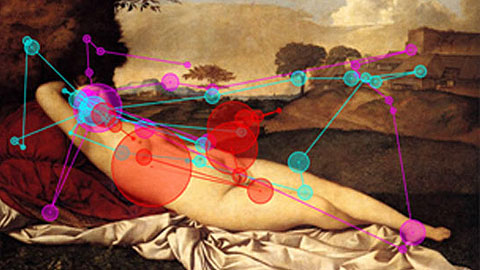New application recognises author and style of painting

13/11/2014
Internet has fostered the appearance of digitalised databases containing large amounts of artistic works; something difficult to create manually. There is the need thus for automatic techniques which can help manage these large databases by classifying the artistic works into different subcategories. An automatic classification system capable of undertaking this task could provide useful applications to the sectors of tourism and museums, as well as when investigating art theft.
Led by scientists at the UAB Computer Vision Centre (CVC), the Computer Vision Laboratory at Linköping University, Sweden, and the Norwegian Colour and Visual Computing Laboratory at Gjøvik University College, Norway, a group of researchers have achieved to create an automatic system for the classification of paintings.
The application correctly guesses the author - among 91 possible artists - in 50% of the cases and has a 60% success rate in classifying the paintings. Although it is not 100% reliable yet, its current success rate is elevated. "If we compare these results to what we would obtain by asking visitors at the exit of an art museum to identify paintings previously unknown to them, the percentage may be similar", mentions CVC researcher Joost Van der Weijer, one of the main researchers of the study.
The technique used in this application is based on two aspects. On the one hand, it conducts a global analysis of the painting based on its most distinctive characteristics. Secondly, it statistically analyses the small details such as texture and colour of thousands of minute sections into which the programme has previously divided the image. "It is interesting that only with this local statistical analysis the system correctly guesses 44% of the authors of the paintings", the CVC researcher emphasises.
The system is currently in the experimental phase, with a database of 4,266 paintings by 91 different artists, the most extensive up to date to incorporate this type of recognition system. After "learning" and practising with 2,275 images, researchers were able to verify the application's effectiveness with the remaining 1991 images. According to Joost Van der Weijer, "the system is based on the success we've obtained with object recognition in other areas. The recognition of works of art is still a rarely explored area where artificial vision algorithms may represent an important advance".
The study, published in the journal Machine Vision and Applications, offers intriguing conclusions, such as the fact that some strokes are more difficult to recognise than others. Lorrain, Lichtenstein, Rothko, Leger and Frans Hals are easily recognisable, but the works of Tiziano, Manet, Courbet, Ernst Giorgione and Velázquez are more difficult to classify automatically.